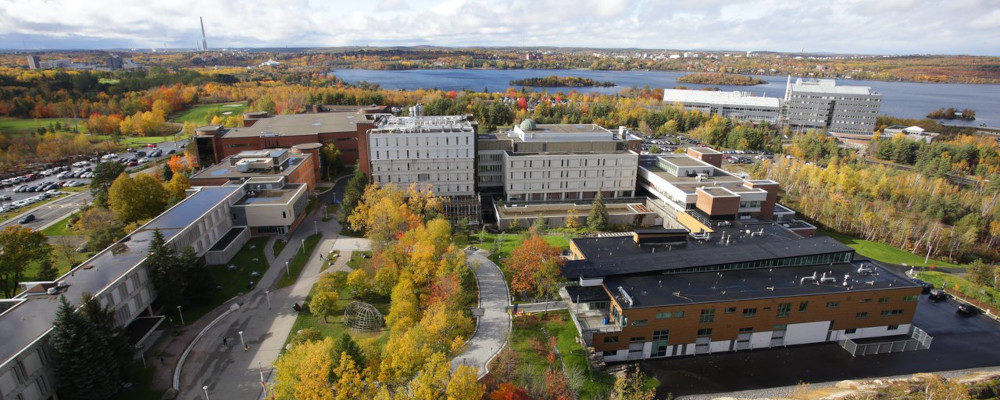When the pandemic began there was a tendency to think it would change everything forever, post-secondary policy included.
Historians, charged with a sudden and immediate relevance, looked to pandemics past for clues about what the future might hold.
Do not fret about the end of post-secondary institutions, history taught us. After the bubonic plague only five of the roughly 30 universities in Europe ceased operations. In fact, many of those universities still exist to this very day, carrying out the same traditions and structures from their pre-Middle Ages founding.
But then, as with nearly every subject area in the pandemic, the common understanding of COVID-19’s impact evolved into a force that would accelerate pre-existing trends. All sorts of trends come to mind, from the rise of online classes to the movement away from theory-based education in favour of practical skills-based labour market studies. In some corners of the internet, you can even stumble across talk of the end of tenure or the consolidation of post-secondary institutions.
The idea of an external force causing the rapid acceleration of change in the post-secondary system is nearly impossible to fathom. The institutions, by their very design, are methodical and slow to evolve, prioritizing research methods and foundational learning over skills training in-demand by employers.
In 1852, English historian Sir Richard Walpole suggested that a family would “hesitate to spend £1,000 or £1,200 which Oxford education involved, in order to obtain…the smattering of knowledge which a boy of ordinary attainments might be expected to possess before he left school.”
Fast-forward to the creation of the college system as we know it in Canada in 1965 and then Education Minister and later Premier of Ontario Bill Davis, seemingly channeled the British historian from a century earlier when he told the legislature, “it is not feasible, nor indeed desirable, that all graduated of our high schools should go to university. The real needs of a very substantial number of our young people lie elsewhere; they would be served poorly and fare poorly in the traditional university programs.”
The post-secondary system is the foundation the economy is built on and it is built using a lot of taxpayer dollars.
When it comes to modern day post-secondary reform, the issues of the 1850s and the 1960s are the same. Universities are slow to adapt their programming to the needs of the labour force.
For a variety of legitimate reasons, Canada’s universities are less nimble than their collegiate counterparts. They have standalone senates, individual pieces of founding legislation, more collective bargaining agreements, a robust tenure system, and a deeper and richer tradition. They also happen to have a near monopoly when it comes to producing those who make post-secondary reform decisions, where it’s political staff, civil servants, or politicians themselves.
For these reasons and more, the most common post-secondary reform discussed centres around the first half of Davis’s comments, that it is not feasible for all high school graduates to go to university. Canada’s progressives have put forward significant cost reduction measures for students ranging from forgiving student loan debt to making tuition completely free. In some respects, significant tuition subsidies are the literal embodiment of Prime Minister Justin Trudeau’s oft uttered slogan to “help the middle class and those working hard to join it.”
Though there is a legitimate conversation to be had about equality of access, it is the later half of Davis’s statement that goes virtually undiscussed: that the population requires more than just the current university offering to succeed. If the COVID-19 pandemic is to truly impact the post-secondary sector, it would be best if it forced decision-makers in government, including those on the centre-right, and post-secondary institutions to come to this realization.
For too long, the centre-right has ceded the ground on post-secondary issues for political reasons. The logic, understandably, is that students do not vote Conservative — big C or small c — so why bother? The reality is the post-secondary system is the foundation that the economy is built on, and it is built using a lot of taxpayer dollars.
Post-secondary spending falls only behind health care, education, and social services spending in most provinces. When capital funding is included, that number grows even higher. Knowing that the pandemic will one day force provincial governments to seriously review their spending, and that health care and education are virtually untouchable in the eyes of provincial premiers of all partisan stripes, cost reduction measures will come to the post-secondary space soon.
If universities resist that change, they will fall victim to more arbitrary decisions aimed at saving dollars rather than improving outcomes. If they embrace this change, by working with today’s governments to solve tomorrow’s problems, they can produce better graduates and make more money.
On outcomes, students are already passing judgement on the value of post-secondary with their feet. A staggering 18 percent of enrolled Ontario college students already have a university degree. Every student that opts for more schooling instead of joining the labour force costs government more, reduces tax revenue, and increases the ever-growing skills gap. On average, a single year of education costs the government $36,500 per student in Alberta, $31,300 in British Columbia, $25,800 in Quebec, and $21,500 in Ontario.
Post-secondary institutions are plugging serious revenue shortfalls with substantial tuition payments from international students.
Of course, investing in education has a greater societal and economic return in the long run. The same can be said for investing in graduate-level education as well, but many of these graduate-level college students are not returning to school to ensure a better job, they are returning to school to find their first one.
On revenue, post-secondary institutions across the country are plugging serious revenue shortfalls with substantial tuition payments from international students. At Queen’s University, undergraduate international students pay tuition rates that are more than seven times higher than tuition rates for domestic students.
The pandemic has made the revenue gaps even worse. Many international students find themselves restricted from coming to Canada during the pandemic and ancillary revenues from student spending on everything from parking to food is non-existent. In Ontario, the provincial association representing universities pegged the total cost of COVID-19 expenses at a net $500 million this year alone.
The question becomes how best to evolve the post-secondary sector. Alberta is pushing ahead with performance-based funding that ties a post-secondary institutions’ operating grant to student graduation and employment rates. Ontario is creating the country’s first ever micro-credential strategy, including financial assistance, to create quicker, more accessible programs designed to help those negatively impacted by the pandemic re-train and get back into the labour force.
Both are important examples of what can be done in this space. That said, both institutions and governments can go further.
If the trend of online programming is going to continue to accelerate, it can at least allow for exciting partnerships with international institutions that are world leaders in different areas through ‘microcampus’ networks. Canadian institutions can establish truly universal partnerships for the first time, combining in-person instruction from their local practitioners with online programming from international schools, giving students a combined degree while maintaining local enrollment requirements. The inverse is also true, allowing Canadian institutions to increase revenue by creating online programming that schools in other countries can use.
If the trend of fewer tenure track spaces is going to continue to accelerate, universities and governments can have a real conversation about which schools should offer which basic programs. Does every single British Columbia university need to offer an English program? Likely not. Some form of realignment and consolidation are likely coming anyways, as evidenced by Laurentian University’s recent bankruptcy and corresponding removal of 69 courses. If it is going to happen, why not do it in a planned and logical manner instead of a haphazard one?
Canada’s post-secondary sector has so far managed a history of continued expansion, which is largely good news for Canada. However, that continued growth masked underlying issues with programming relevance and revenues. Given the post-secondary sector has been built with taxpayer dollars, these issues should concern partisans of all stripes.
Ultimately, if the COVID-19 pandemic does accelerate trends in post-secondary after all, that would be a positive development.




